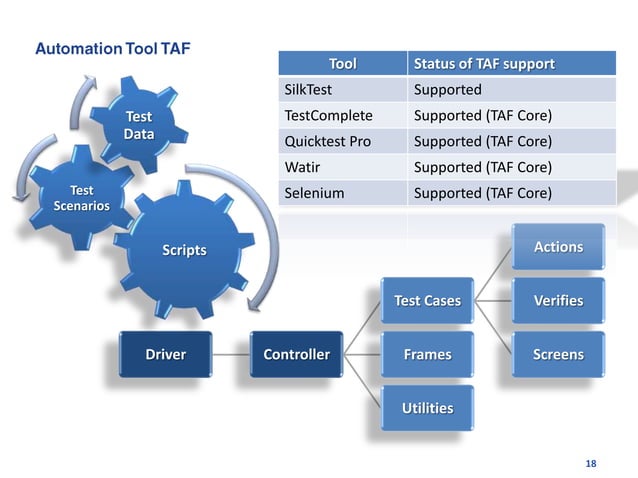Introduction
As artificial brains (AI) continues to be able to evolve, one regarding its most encouraging applications is within the field regarding code generation. AI models are increasingly being employed to be able to automatically generate code, thereby streamlining the software program development process, minimizing the time expended on repetitive duties, and minimizing man error. However, the reliability and accuracy of AI-generated computer code are paramount, while even minor mistakes can lead in order to significant issues in software performance and even security. This is usually where testing methodologies, such as Key-Driven Testing, come directly into play.
Key-Driven Screening (KDT) is a widely-used software testing methodology that leverages recylable components called «keys» to facilitate computerized testing. Within the circumstance of AI code generation, Key-Driven Screening can be an invaluable tool regarding ensuring that the produced code meets predefined quality standards and even functions as designed. This post provides the introduction to Key-Driven Testing in the realm of AI code generation, checking out its principles, advantages, challenges, and useful implementation.
Understanding Key-Driven Testing
What exactly is Key-Driven Testing?
Key-Driven Tests, also known while Keyword-Driven Testing or perhaps Action-Word Based Assessment, can be a method associated with automating test cases by defining some sort of set of reusable test steps, or even «keys, » of which can be applied across different scenarios. Each key signifies a specific motion, for example clicking a button, entering text, or verifying a result. These secrets are typically stashed in a core repository and can be combined in various methods to create complex check cases.
The primary good thing about Key-Driven Tests is it allows non-technical users to make and manage test out cases without needing complex knowledge of the actual code. Test instances are usually composed in a table file format, where each line corresponds to a certain test step plus includes the real key, the particular test data, and the expected result.
How can Key-Driven Testing Function?
Key-Driven Testing uses a systematic method that includes the next steps:
Identify Reusable Actions (Keys): The particular first step will be to identify the particular common actions or steps that could be reused across multiple test situations. These actions are usually then understood to be secrets.
Create a Crucial Repository: Once typically the keys are determined, they are stored throughout a central repository. This repository acts as a reference for creating test out cases and assures consistency across the testing process.
Develop Test Cases: Test out cases are designed by combining the particular keys in diverse sequences, along along with the necessary test out data and anticipated outcomes.
Execute Test out Cases: The test cases are and then executed using a great automation tool that will interprets the secrets and performs typically the corresponding actions.
Evaluate Results: After typically the test cases will be executed, the results are analyzed in order to determine whether typically the AI-generated code behaves as expected.
Advantages associated with Key-Driven Tests
Key-Driven Testing offers various benefits, particularly when put on AI code generation:
Reusability: Secrets can be reused throughout multiple test instances, reducing the moment and effort required to create plus maintain tests.
Maintainability: Since keys are centrally managed, updates to the important factors automatically propagate in order to all associated test out cases, simplifying servicing.
Scalability: Key-Driven Screening is highly scalable, making it ideal for large in addition to complex projects wherever multiple test situations are needed.
Ease of access: Non-technical users can easily create and control test cases, allowing broader participation inside the testing process.
The particular Role of Key-Driven Testing in AJE Code Generation
Making sure Accuracy and Dependability
AI-generated code must be rigorously tested to make certain it functions properly and adheres to predefined quality criteria. Key-Driven Testing performs a crucial position in this particular process simply by providing an organized and even systematic way of screening. By defining reusable keys that represent common coding activities or patterns, testers can efficiently generate comprehensive test situations that cover a variety of scenarios.
For example, consider an AJE model designed to be able to generate web software code. Using Key-Driven Testing, testers could define keys intended for actions like «open browser, » «navigate to URL, » «click button, » and «verify site load. » These kinds of keys can next be combined in order to create test instances that simulate different user interactions together with the generated web app, ensuring that typically the AI-generated code reacts not surprisingly under numerous conditions.
Facilitating Regression Assessment
As AJE models evolve and even generate new computer code versions, it is usually essential to conduct regression testing to be able to verify that typically the new code does not introduce mistakes or break current functionality. Key-Driven Assessment is particularly well-suited for regression testing since it allows testers to quickly re-execute existing test instances by leveraging typically the same group of secrets. This makes sure that any changes in typically the AI-generated code usually are thoroughly tested, and prospective issues are determined early in the development process.
Boosting Test Insurance coverage
One of the issues in testing AI-generated code is guaranteeing comprehensive test insurance coverage, given the vast number of achievable scenarios and variations. Key-Driven Testing tackles this challenge simply by enabling the design of modular and even flexible test circumstances. By combining different keys in different sequences, testers could generate a extensive range of test cases that cover different aspects in the AI-generated code, from basic functionality to edge cases.
Helping Continuous Integration and even Delivery (CI/CD)
Inside modern software growth, continuous integration plus delivery (CI/CD) sewerlines are critical regarding maintaining a fast and reliable relieve cycle. Key-Driven Testing can be seamlessly integrated into CI/CD pipelines, allowing automatic test cases in order to be executed when new code is usually generated by the AJE model. This assures that the AI-generated code is consistently tested and authenticated, reducing the threat of defects becoming introduced into creation.
Challenges and Factors
While Key-Driven Tests offers numerous benefits, it is not necessarily without challenges, specially in the circumstance of AI computer code generation.
Complexity associated with Key Management
As the number of keys increases, managing the key repository could become complex and even time-consuming. It is usually essential to have a very well-organized and methodized approach to crucial management, including suitable naming conventions, paperwork, and version control.
useful reference on Analyze Info
Key-Driven Tests relies heavily on test files to drive the test out cases. Ensuring that the particular test data is definitely accurate, representative, plus up-to-date is essential for your success regarding the testing method. Additionally, generating plus maintaining test information for AI-generated program code can be challenging, especially when working with dynamic or context-dependent data.
Changing to AI-Specific Difficulties
AI-generated code may exhibit unique qualities, such as variability and unpredictability, that can complicate the tests process. Key-Driven Screening has to be adapted to be the cause of these challenges, such as by including AI-specific keys or perhaps developing ways of take care of unexpected behavior.
Summary
Key-Driven Testing is definitely a powerful and versatile methodology that can significantly enhance the testing process regarding AI-generated code. By leveraging reusable tips, testers can create comprehensive and maintainable test cases that assure the accuracy, stability, and performance of the generated code. Since AI continues to be able to play a even more prominent role inside software development, using robust testing strategies like Key-Driven Testing will be important for delivering high-quality in addition to reliable AI-driven remedies.







Deja una respuesta